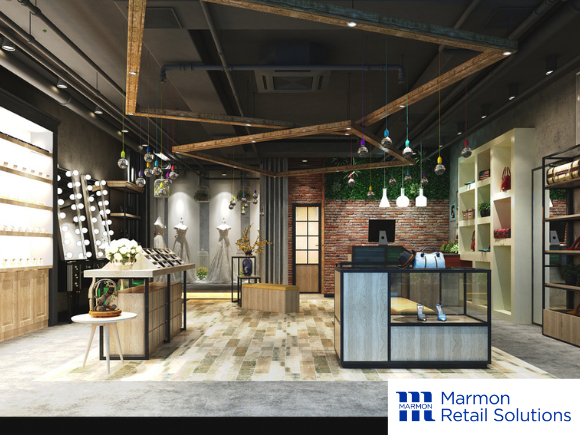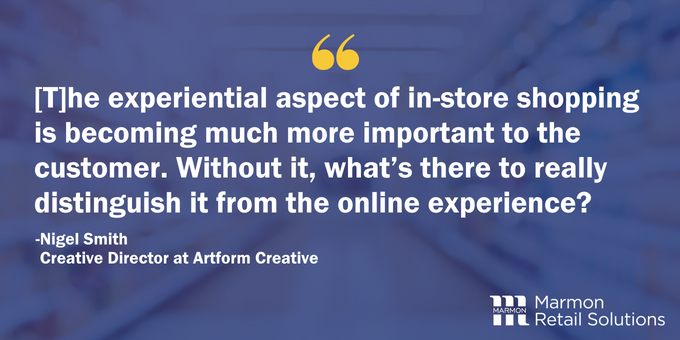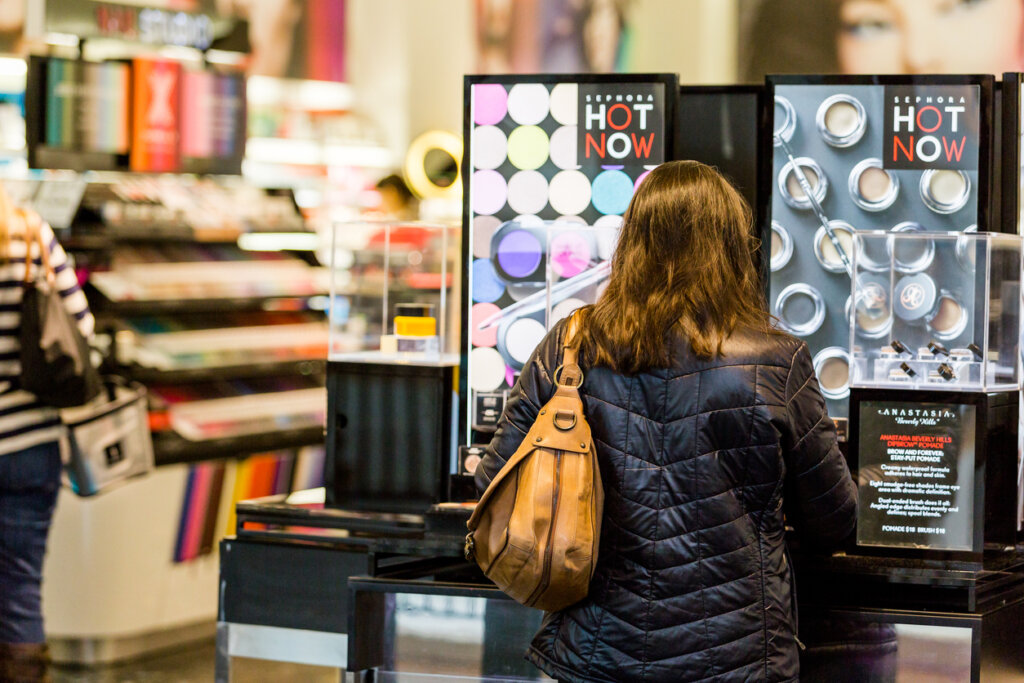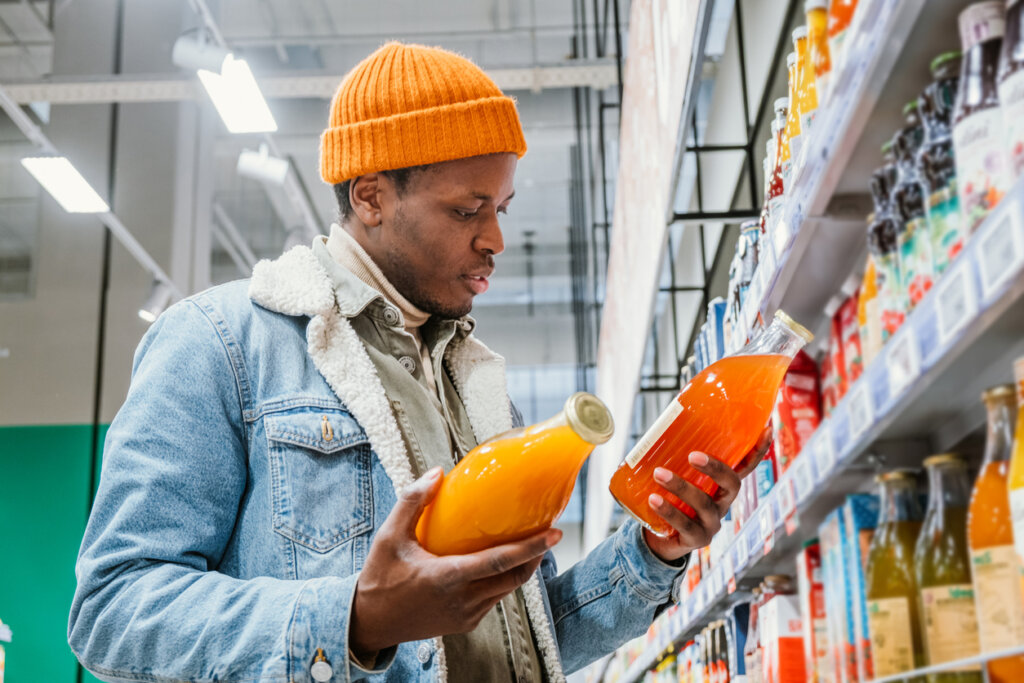Articles
Designing a Retail Store: 2 Methods to Shake-Up (and Improve) the In-Store Shopping Experience
Learn two methods for designing a retail store that can help engage shoppers more effectively.

If you’re a retailer with brick-and-mortar stores, it’s more crucial than ever to use design strategies that engage shoppers and keep them coming back. Below, we’ll share two insights for designing a retail store that can help make shopping more inviting, compelling, and memorable.
But first, a video on the matter:
Everyone knows online shopping has profoundly changed consumer behavior. But in-store shoppers won’t disappear anytime soon – and the numbers back that up. For example, based on data from customer research firm Forrester, RetailDive.com reports that 72% of retail sales in 2024 will still be “offline.”
Retailers can secure a greater share of those and future sales by designing spaces that meet the evolving needs of shoppers. Let’s take a close look at two methods with Nigel Smith, Creative Director for Artform Creative, and a retail design specialist with more than 30 years of experience.
Design Method #1: Apply the “Fragrance Principle”
“Retailers have to realize that the experiential aspect of in-store shopping is becoming much more important to the customer,” says Smith. “Without it, what’s there to really distinguish it from the online experience?”

Successful brands and retailers across a range of markets are using the physical store to deliver experiences that go well beyond anything a shopper could have online. In the process, many are applying what Smith calls the “Fragrance Principle.”
A shopper needs the physical store to truly experience a fragrance. But that fact actually embodies a retail design principle applicable to a range of scenarios: The physical retail space is your chance to have a customer understand and appreciate a given product in a way that’s simply not possible online.
Fragrance Principle Examples
Even if you can’t launch large-scale experiential initiatives, with the help of the Fragrance Principle, you can at least sharpen your focus and start to see the experiential potential in more and more items.
Consider these examples, beginning with an actual fragrance-related case in point.

Sephora. The international beauty store chain has focused on creating fun and informative in-store experiences with well-trained beauty advisors, beauty studios, and various tech-enabled installations, including a digital “fragrance quiz” and face-scanning technology that helps customers match cosmetic shades to their skin tone.
Some of these in-stores features have their mobile app equivalents. However, a shopper within a physical store has an obvious sensory advantage with the ability to, for example, go directly from a fragrance recommendation to sampling it immediately and comparing it to others.
For more details on Sephora’s in-store experience, check out this National Retail Federation interview with Sephora makeup and fragrance executive Alison Hahn.
Canada Goose. When Canada Goose, maker of extreme-weather outerwear, launched its Cold Room experience to shoppers, Fast Company magazine named it “the best retail experience of the year” and described it as “a good example of experiential retail that actually serves a purpose.”
The Cold Room gives shoppers the opportunity to test out jackets in extreme temperatures. Those shoppers can also refer to signage that explains the brand’s Thermal Experience Index to gauge the kind of jacket they need. (Check out this review from Insider.com for more information.)
Testing a jacket in this way is not only memorable but also extends the time a customer spends with the product. Moreover, it definitely provides an in-store experience that has no online parallel.
DICK’S Sporting Goods. Delivering immersive, product-focused experiences has long been important to DICK’S Sporting Goods, the largest sporting goods retailer in the U.S.
But the company has recently taken experiential retail to another level with its DICK’S House of Sport. There are currently three in the U.S., and these include offering everything from cutting-edge batting cages and virtual golf driving bays to outdoor turf fields with regulation running tracks.
Toni Roeller, senior VP of in-store environment & visual merchandising, says the initiative reflects the importance that DICK’S places on giving customers “the opportunity to try out the product, to touch and feel it and make sure it’s the right one … .”
Many of the experiential features at the House of Sport locations are being tested to see how they can be incorporated into the company’s existing stores (more than 700 and counting).

Design Method #2: Appeal to the Three Basic Shoppers
Another way to improve your retail store design is to get inside the mind of your shoppers. Of course, shopper intent varies widely. However, that variety need not be overwhelming.
Smith says that aiming to meet the needs of the following three basic shoppers can go a long way toward a smarter store design.
The mission shopper. This shopper has a one-track mind. Let’s say they’re on the hunt for coffee. “They know exactly which coffee they’re looking for. All they want to do is pick it up and get out of the store as quickly as possible,” explains Smith.
Shoppers in general feel more time-pressed today, says Smith, a factor especially important when designing for the mission shopper. That’s precisely why clear and effective navigation cues — from entering and locating the product to paying and exiting — are so important.
The searcher. Continuing with the coffee theme, the searcher has a specific coffee in mind, yet they’re also open to other brands. Good navigation is still important, but now the retailer (or brand) can potentially capitalize on the searcher’s openness.
That’s if the design has elements effectively conveying, for example, coffee with better value, interesting trends in coffee, or new types of coffee on the market. “The searcher is happy to be given information that educates them, and they may make a buying decision based on it,” says Smith.
The browser. Smith describes the browser as a shopper “happily wandering around” with no intention of buying coffee. But the browser can, for instance, be drawn to a compelling display that describes a coffee’s benefits and, in effect, asks, “Have you tried this coffee?”
Based on that encounter, the browser may be persuaded to make an unanticipated purchase.
Bringing it all together. The model of the three types of shoppers is especially important for retailers looking to design not only more effectively but also more efficiently.
“It can be challenging,” says Smith, “but ideally you want to deliver design features — from navigation and signage to installations — that work for all of these shoppers. When you can do that, you’re essentially accomplishing three important goals at once.”
Your Next Step: Implementing Methods for a Better Store Experience
You’ve just learned two different perspectives on how to improve the design of your retail stores. But the possibilities, not surprisingly, are vast.
If you’re wondering how to make your next move, you may want to consider a retail consultant who can help. Marmon Retail Solutions can support every step of your design initiatives, from project conception to store fixture design and manufacturing to actual installation.
Designing retail stores for the evolving shopper of today (and tomorrow) is challenging. But you can gain a significant advantage by working with a single-source expert to streamline the process. If you’d like to start a conversation, contact us today.
Learn more about how these retail solutions can work for you.